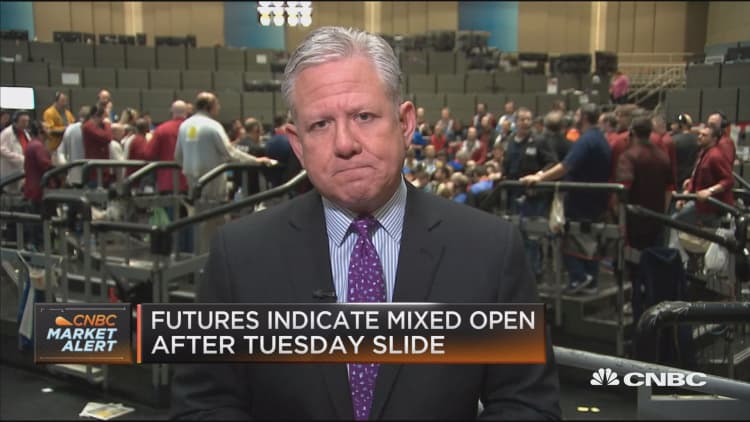
The two-year Treasury yield is the one to watch for Fed interest rate moves, and it's been on the rise to a near-decade high — close to the level it reached around the time Lehman Brothers failed.
The Federal Reserve has been moving to normalize interest rates, boosting them five times since ending the long era of ZIRP — or zero interest rate policy, started at the end of 2008 in the heat of the financial crisis.
"The two-year is by far and away the one that's looked at most closely for the Fed," said Andrew Brenner of National Alliance. "The in May of 2008 was 3.04 percent. It started to go down, and we were having problems in 2008. Where we are right now coincides with September of 2008."
Lehman Brothers filed for bankruptcy on Sept. 15, 2008. In late Tuesday trading, the two-year Treasury yield hit a high of 2.28 percent, its highest since Sept. 19, 2008, when the two-year was as high as 2.31 percent, according to Tradeweb.
The two-year was at 2.25 percent in Wednesday morning trading. "You better get used to two-years being even higher than this because short-term rates are going to continue to rise. The Fed is on a mission," said Ward McCarthy, chief financial economist at Jefferies.
The demise of Lehman and near failure of other institutions resulted in a long period of extraordinary easing by the Fed, which it has been slowly moving away from. Late last year, the Fed started the slow process of shrinking its balance sheet, which ballooned to more than $4 trillion as it bought Treasury and other securities.
In the months around the Lehman failure, markets were gripped by fear and the two-year yield fell under 1 percent and for the most part stayed there until 2016.
The Fed has forecast three interest rate hikes this year, and the market expects the first one at its March 21 meeting. Many economists are now forecasting a fourth rate hike.
"If you're going to have four Fed rate increases, it looks to me the next level is 2.5 percent. I think you're going to grind higher in yields in the front end," said Brenner.
The Fed is scheduled to release minutes from its last meeting at 2 p.m. ET Wednesday, and traders are watching for clues about the Fed's views on inflation and whether it signals anything new on interest rates.
There's also $50 billion in Treasury auctions Wednesday: $15 billion in two-year floating rate notes at 11:30 a.m. ET and $35 billion in five-year notes at 1 p.m. Those auctions could send yields higher.
"It doesn't look like it's going to stop anytime soon with supply and an aggressive Fed. The 10-year is reacting to a different set of metrics including overseas buying," said Brenner. The widely watched 10-year is the benchmark Treasury, and it influences a whole range of business and consumer loans, including mortgages.


